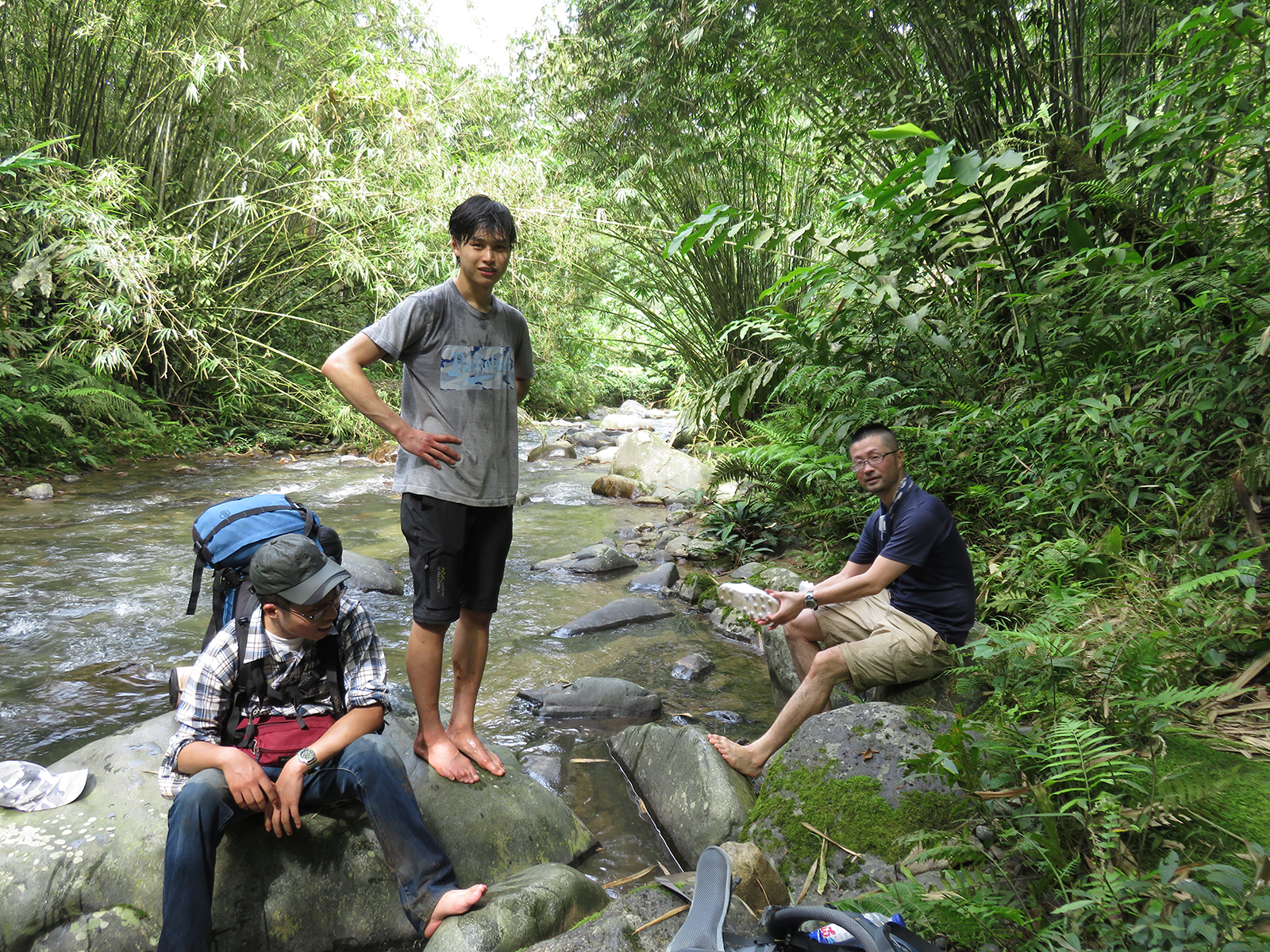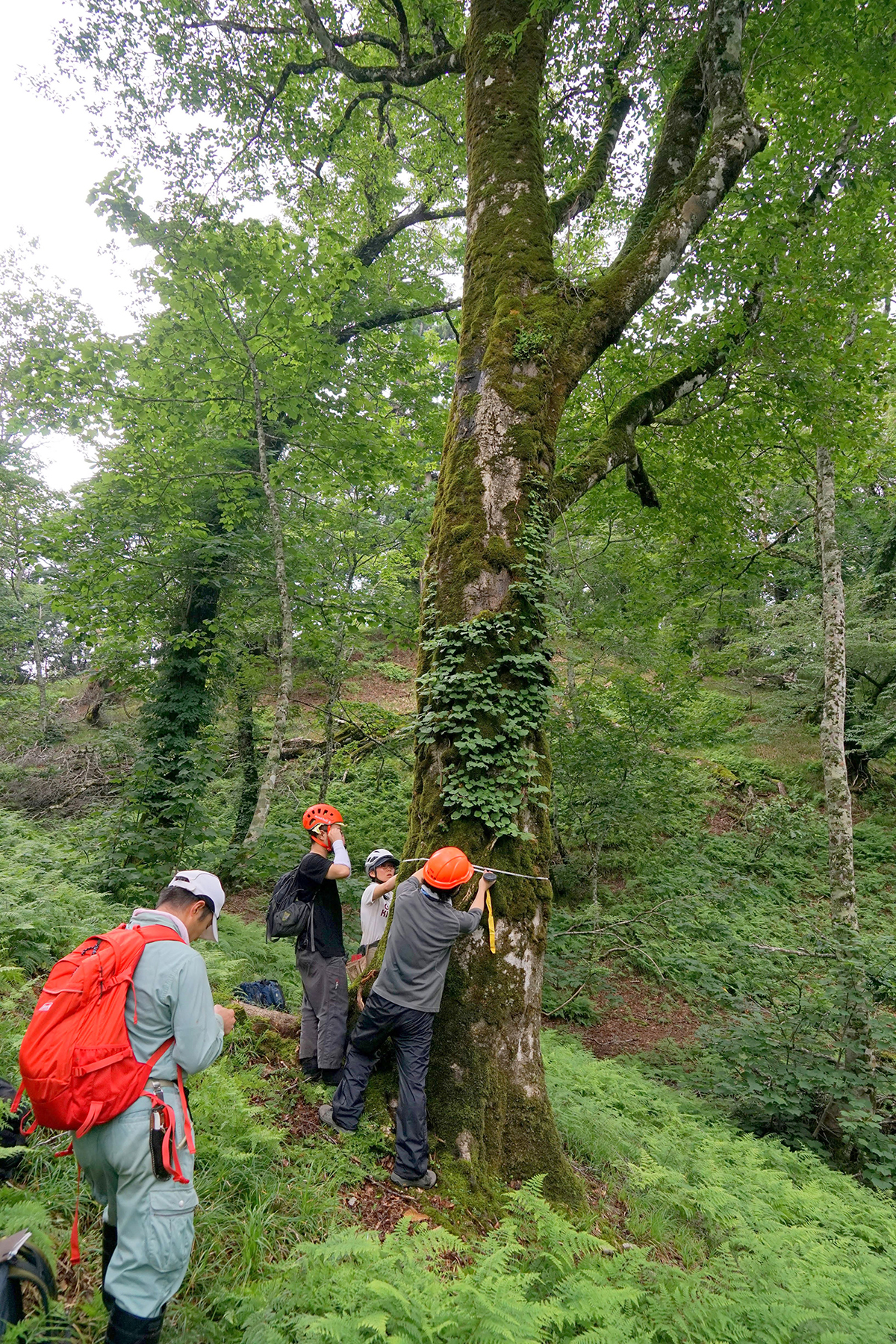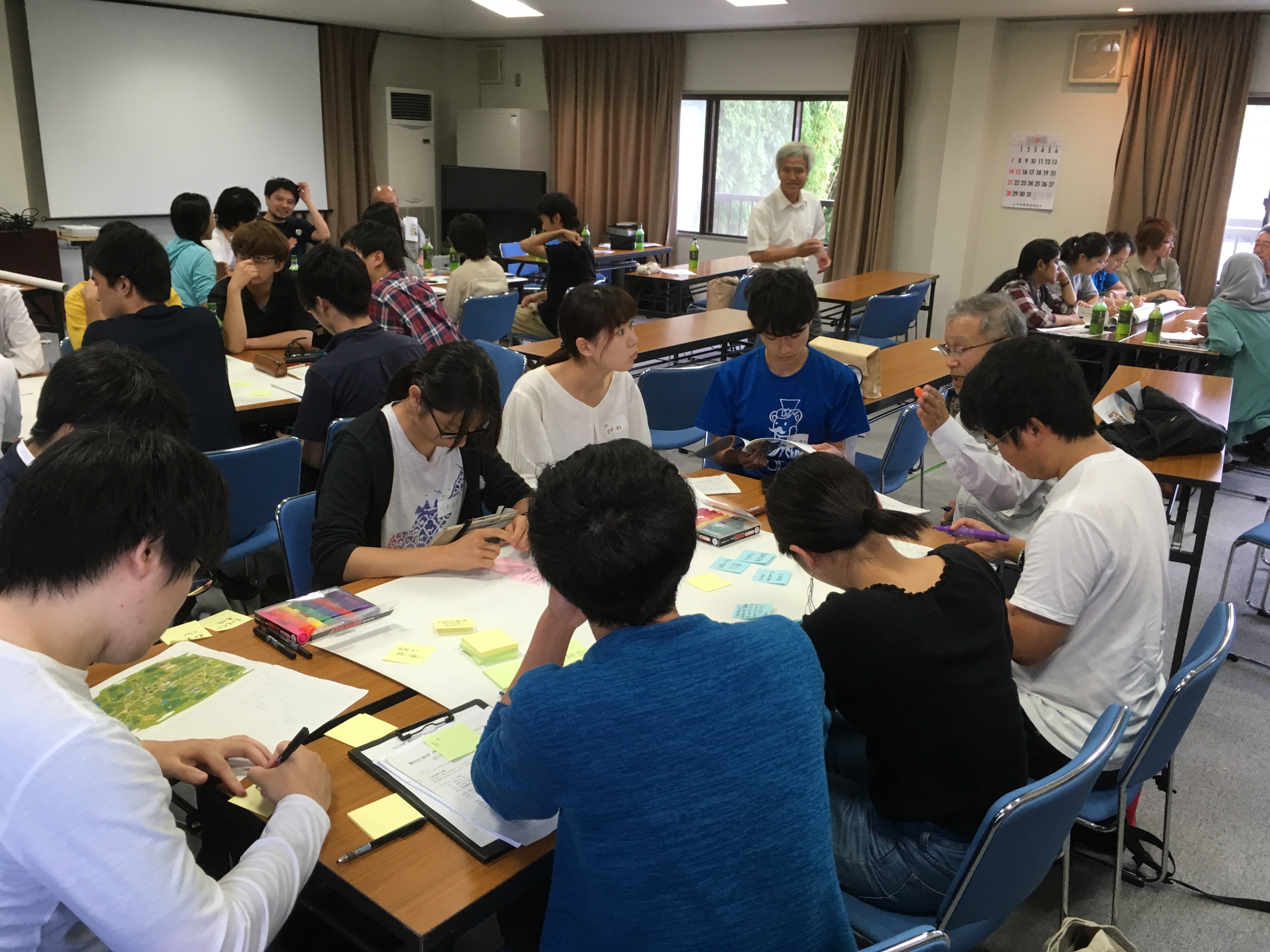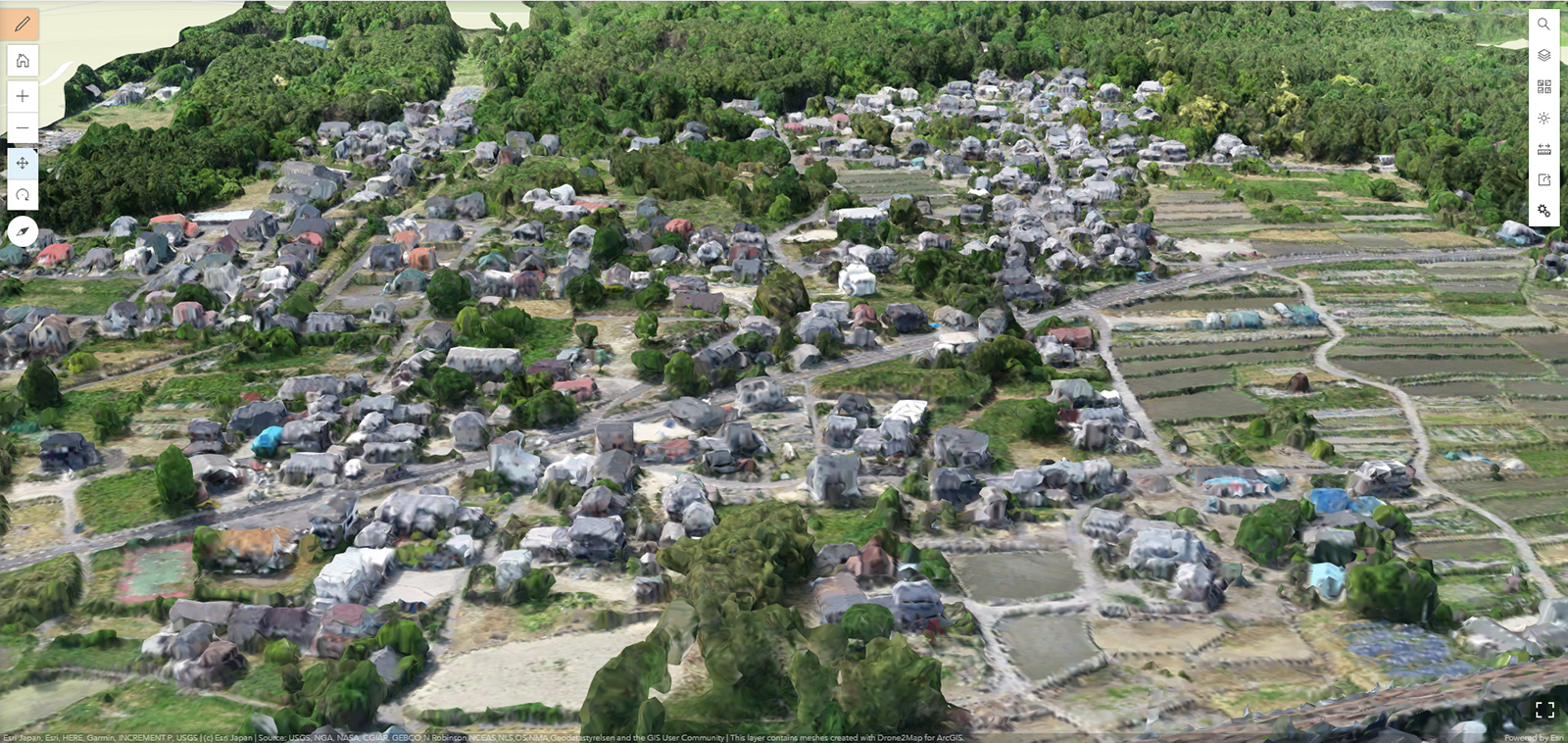Research Laboratory Profile:
Biodiversity Conservation, Department of Technology and Ecology
What kind of research do you do?
The research area that Professor SETOGUCHI and Assistant Professor SAKAGUCHI are focusing on is the evolutionary biology of plants, based on plant systematics and phytogeography. In the past, we used to spend more than a third of the year conducting studies overseas, but recently, our research has become more Japan-centered. Japan stretches a long distance from north to south and has diverse environments, ranging from subpolar to subtropical zones. We hope to find interesting phenomena that are unique to the characteristics of the Japanese archipelago and explore how plants adapt themselves to such environments for evolution and survival. Associate Professor NISHIKAWA is doing very similar research into fauna, as opposed to flora. The fields in which he conducts his research center on East Asia, including Japan, and Southeast Asia.
A large percentage of the plants and animals we study are rich in diversity. We have conducted various activities such as conservation, collection and propagation for each animal and plant that we encounter in the course of our research, but, ultimately, somewhere along the way, we have realized that conservation has come to take up a full half of our work.
What is unique about your laboratory?
When we joined the Hall of Global Environmental Research, we thought about what our defining characteristics were. Because we were working in biological diversity, diversity and evolutionary, and diversity conservation studies, “diversity” became our keyword.
Also, given our responsibilities in liberal arts courses, we try as much as possible to have each of our lecturers cover a broad range of areas. If we were to establish one single course like other faculties, we would all be covering the same field. Although the orientation of our research is heading in the same direction, in our biodiversity classes, our lecturers are also diverse, which we see as one of the distinctive characteristics of our laboratory.
Tell us about the research your graduate students are doing.
Many of students seem to be more interested in evolution rather than conservation. Having said that, although they may be most interested in evolution when they first start their research, as they participate in conservation-related events, spend time in the laboratory, and become associate with the locals, some students become more aware of conservation and eventually end up involved in conservation to a certain extent, even as they continue to pursue evolutionary studies and biodiversity sciences. We do hope that the students in our laboratory will become more involved in conservation through such opportunities.
What kind of areas do students move on to after they graduate from your laboratory?
Of those students who have completed their doctorates, most have found jobs at universities. Some graduates have joined consulting companies and others have started their own businesses, taking advantage of their research experience. Some postgraduate students want to set up their own companies, so we hope to see more students who will experience that kind of research a little more and work actively in society in that way.
In terms of conservation and the like, involvement with public administrations will take on increasing importance going forward. In particular, we hope to deepen the connections on the cultural front. We would like to see our graduates move into a greater variety of workplaces after they have gained research experience, such as teaching, public service, or in ordinary private-sector business. Ultimately, that will be the quickest way when it comes to conservation of biodiversity. More flexibility in various respects is what we are aiming for.
(Interviewer: FUKAMACHI Katsue)
Department of Global Ecology
Sustainable Rural Development
How would you describe your laboratory?
Our Laboratory was originally launched as the Agricultural Landuse Planning in the Faculty of Agriculture. The name was later changed to the Laboratory of Rural Planning, and in 2011, we joined the Hall of Global Environmental Research and became the Laboratory of Sustainable Rural Development. There is an academic society called the Association of Rural Planning, and we have been involved in this field ever since it was established. In simple terms, rural planning is the study of problem-solving for rural communities. Basically, we start with problem-solving in the regions, making use of various concepts, theories, and approaches to come up with concrete plans and proposals. We develop planning theories, methods, schemes and the like, but we do not attempt to complete them all by ourselves. Instead, we adopt a more pragmatic approach, in which we will insatiably try anything that we think might be useful for problem solving. Out in the field, there are not only problems, but hints for solving them lying in wait for us to find them, so naturally, we place major importance on learning from the field.
Our laboratory works on a variety of issues, not only in Japan, but overseas as well. We endeavor to generate concrete solutions, but the harder we try, or the more we want to make a proposal that suits that particular area, the more we find that each area has its own peculiarities and systems vary substantially from country to country. An interdisciplinary approach has been adopted in the study of rural planning since its early stages, but research themes have tended to focus on the challenges of rural communities in Japan. For this reason, the field had fallen considerably behind in an international sense. In that respect, we believe our laboratory has an advantage.
What kind of things do you research?
Our fieldwork centers on the areas around Kansai, but we do go to a variety of places. The kinds of themes we engage in include, for example, research into the development of community planning methodologies and the restructuring of local organizations. We regularly visit regional areas and assist with the development of plans and make proposals regarding schemes on an ongoing basis. We select various regions to suit each theme, such as rural community planning in Kobe City, tourism in Miyama-cho, and digitization in farming communities in Kameoka. Going forward, we hope to prioritize themes such as the development of regional models related to rural planning and basic research regarding workshops.
How is your laboratory run?
The laboratory has a total of 29 members, including one professor, two associate professors, one assistant professor, and three researchers, from Indonesia, Bangladesh, and Japan. We also have 13 Master’s students including students from Bangladesh, Indonesia, China, Taiwan, and South Korea. Because there are so many international students, our research themes are very diverse.
What kind of research are the researchers and students conducting?
Our researchers are conducting research into future forecasting models in the areas of Marchais(street marckets), agriculture-welfare collaboration, and disaster prevention. The students’ research themes include improvement of disaster prevention resilience in local communities in metropolitan areas, the development of inbound tourism that takes the co-existence of multiple cultures into account, and workshops using 3D models. In particular, we are seeing rapid advancements in digitization in rural areas at the moment, such as what we call smart agriculture and is known as smart villages overseas, with ICT technologies rapidly spreading in farming communities. Seeing this as an opportunity, we are seeking to find solutions to the various problems that rural communities are currently facing, such as depopulation and the shortage of people willing to take over farming from aging farmers.
(Interviewer: FUKAMACHI Katsue)





